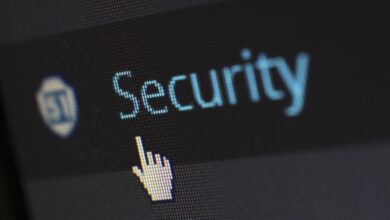How to Uninstall Stubborn Software That Won’t Delete

Uninstalling software is usually a straightforward process: head to the Control Panel (on Windows) or drag the app to the Trash (on macOS), and you’re done. However, some programs can be stubborn, refusing to uninstall properly or leaving behind residual files that clutter your system. These remnants can slow down your computer or cause conflicts with other software. In this guide, we’ll explore several methods to completely remove stubborn software from your system.
1. Use Built-In Uninstaller Tools
Windows
- Control Panel :
- Go to
Control Panel > Programs > Programs and Features. - Locate the problematic software in the list.
- Right-click on it and select “Uninstall.”
- Go to
- Settings App :
- Open the
Settingsapp (Win + I) and navigate toApps > Apps & Features. - Find the program, click on it, and select “Uninstall.”
- Open the
macOS
- Drag to Trash :
- Drag the application from the
Applicationsfolder to the Trash. - Empty the Trash afterward.
- Drag the application from the
- Launchpad :
- Click and hold the app icon in Launchpad until it jiggles.
- Click the “X” button to uninstall (only works for apps downloaded from the Mac App Store).
2. Try Third-Party Uninstaller Tools
If the built-in tools fail, third-party uninstallers can help by removing leftover files and registry entries.
For Windows
- Revo Uninstaller :
- Download and install Revo Uninstaller .
- Run the tool, select the stubborn program, and choose “Uninstall.”
- After uninstallation, Revo will scan for leftover files and registry entries, allowing you to delete them safely.
- IObit Uninstaller :
- A free alternative to Revo, IObit Uninstaller offers similar functionality.
- It also provides a “Forced Uninstall” option for particularly stubborn programs.
For macOS
- AppCleaner :
- Download AppCleaner for free.
- Drag the stubborn app into AppCleaner, and it will detect associated files (preferences, caches, etc.).
- Click “Remove” to delete everything related to the app.
3. Manually Remove Residual Files
Sometimes, even after uninstalling, leftover files remain on your system. Here’s how to clean them up:
Windows
- Delete Program Files :
- Navigate to
C:\Program FilesandC:\Program Files (x86). - Look for folders related to the uninstalled program and delete them.
- Navigate to
- Clear Registry Entries :
- Press
Win + R, typeregedit, and press Enter to open the Registry Editor. - Search for keys related to the program (use
Ctrl + F). - Be cautious when editing the registry; deleting the wrong entry can cause system instability.
- Press
- Remove Temporary Files :
- Open
Disk Cleanupby searching for it in the Start menu. - Select the drive where the program was installed and clean temporary files.
- Open
macOS
- Delete Preference Files :
- Go to
~/Library/Preferencesand look for.plistfiles related to the app. - Delete these files to remove preferences.
- Go to
- Clear Cache and Logs :
- Navigate to
~/Library/Cachesand~/Library/Logs. - Remove any folders or files associated with the app.
- Navigate to
4. Use Safe Mode to Uninstall
Some programs may resist uninstallation because they are running in the background or have dependencies. Booting into Safe Mode can help bypass these issues.
Windows
- Boot into Safe Mode :
- Press
Win + R, typemsconfig, and press Enter. - Go to the
Boottab, check “Safe boot,” and select “Minimal.” - Restart your computer.
- Press
- Uninstall the Program :
- Once in Safe Mode, use the Control Panel or Settings app to uninstall the software.
macOS
- Boot into Safe Mode :
- Restart your Mac and hold down the
Shiftkey immediately after hearing the startup sound. - Release the key when you see the login screen.
- Restart your Mac and hold down the
- Uninstall the App :
- Use Finder or a third-party tool like AppCleaner to remove the program.
5. Check for Antivirus or Security Software Interference
Some antivirus programs or security tools may block certain applications from being uninstalled. Temporarily disable your antivirus software before attempting to uninstall the program again.
- Windows :
- Open your antivirus software and look for an option to disable real-time protection.
- macOS :
- Go to
System Preferences > Security & Privacyand adjust settings as needed.
- Go to
6. Use Command-Line Tools
For advanced users, command-line tools can provide more control over the uninstallation process.
Windows
- PowerShell :
- Open PowerShell as Administrator.
- Use the following command to uninstall a program:powershellCopy1Get-AppxPackage *programname* | Remove-AppxPackage
- Replace
*programname*with the actual name of the program.
- Command Prompt :
- Use the
wmiccommand to uninstall:cmdCopy1wmic product where name=”Program Name” call uninstall
- Use the
macOS
- Terminal :
- Use the
rmcommand to manually delete app files:bashCopy1rm -rf /path/to/application.app - Be careful when using this command, as it permanently deletes files.
- Use the
7. Perform a System Restore or Reset
If all else fails, restoring your system to a previous state or resetting it entirely can remove stubborn software.
Windows
- System Restore :
- Search for “Create a restore point” in the Start menu.
- Go to the
System Restoretab and follow the prompts to restore your system to a point before the program was installed.
- Reset This PC :
- Go to
Settings > Update & Security > Recovery. - Choose “Reset this PC” to reinstall Windows while keeping or removing your files.
- Go to
macOS
- macOS Recovery :
- Restart your Mac and hold
Cmd + Rduring startup. - Use Disk Utility to erase your drive and reinstall macOS.
- Restart your Mac and hold




